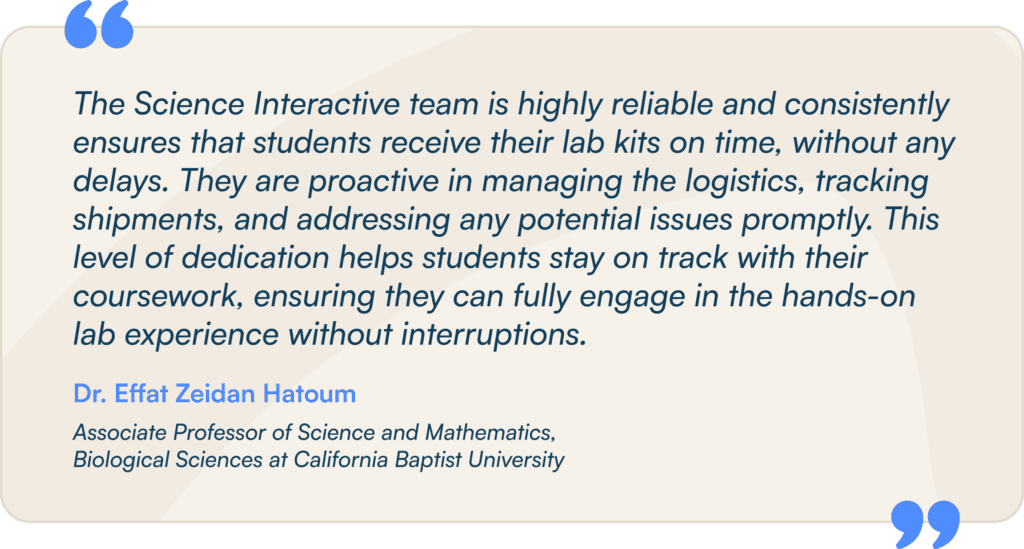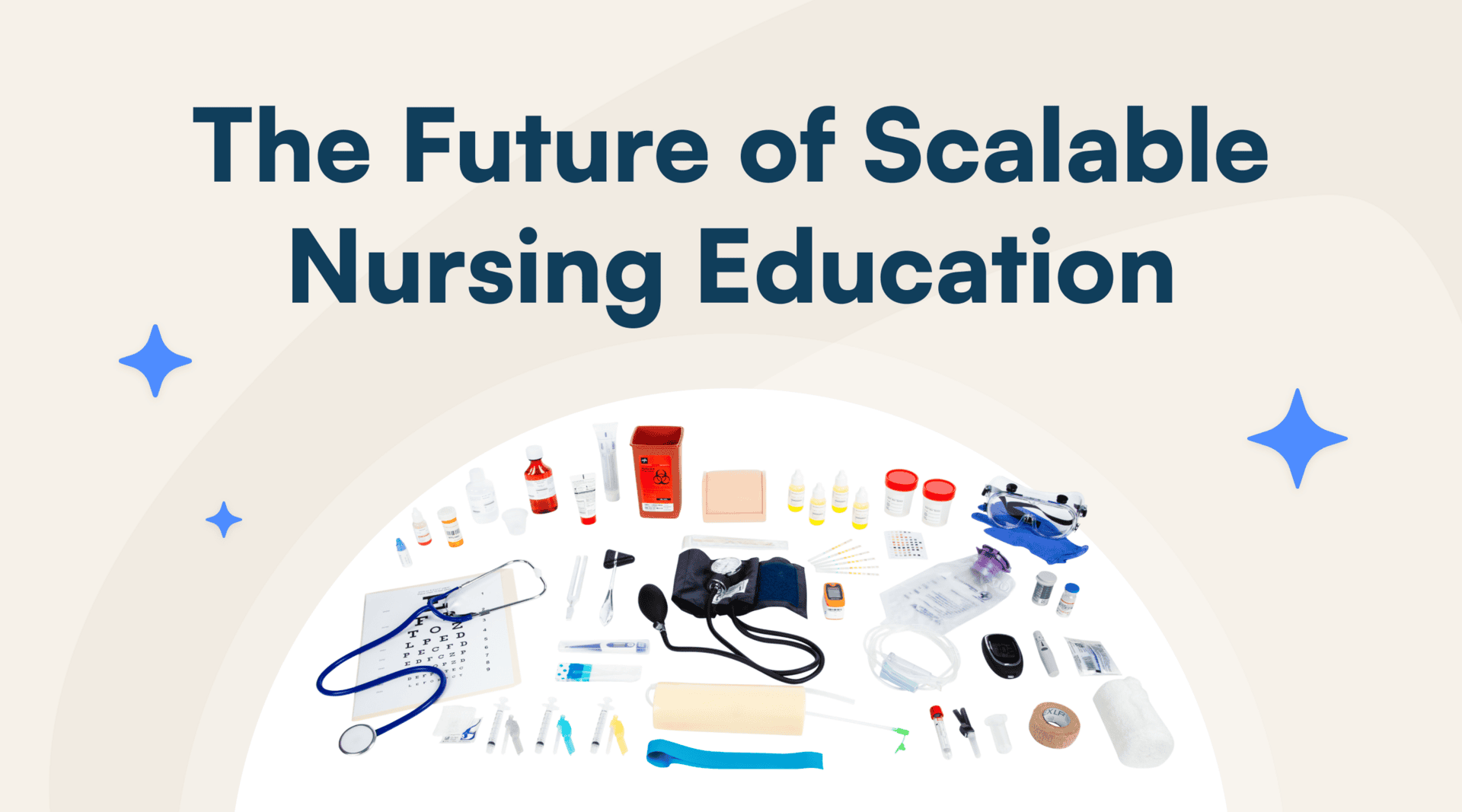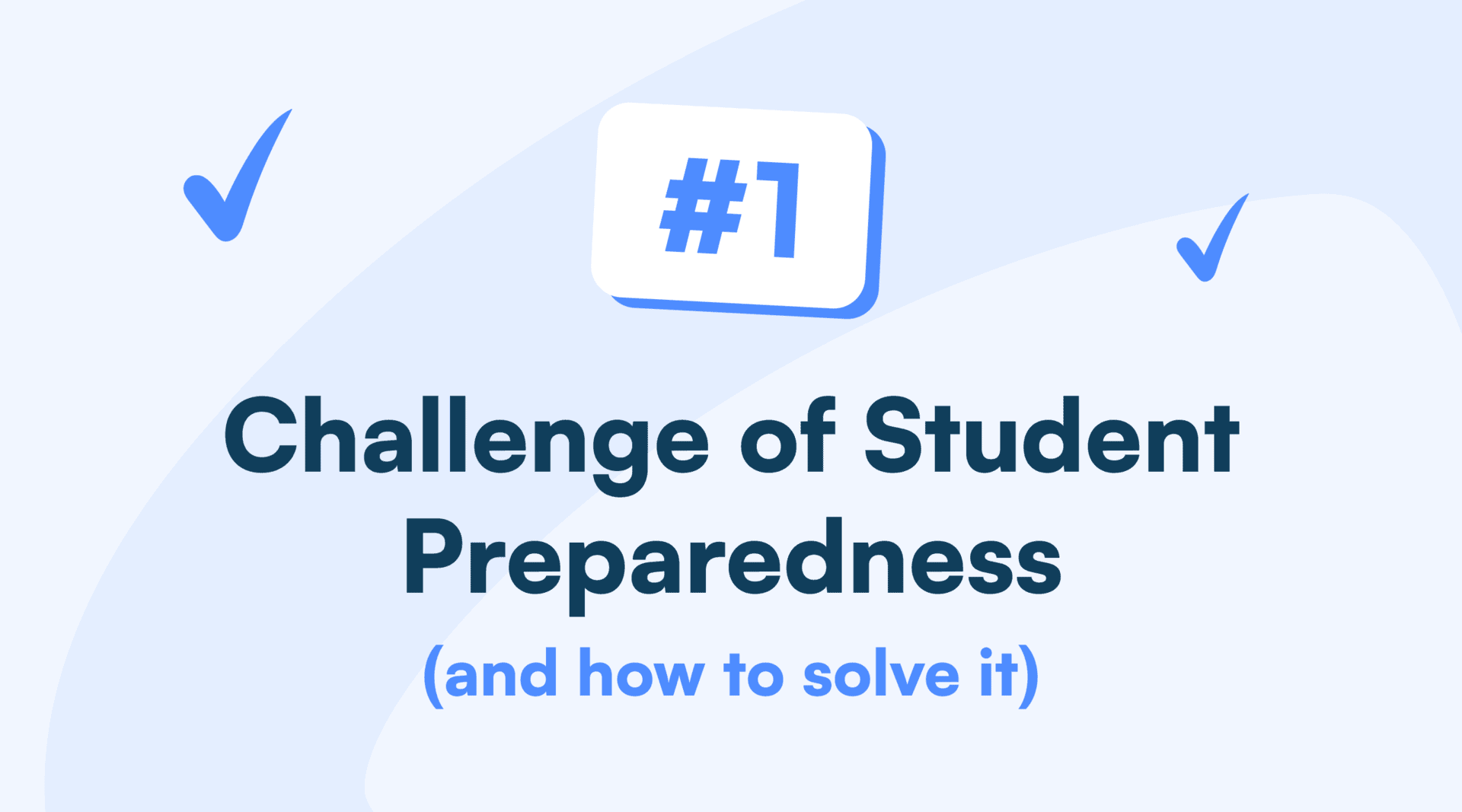You’ve heard the adage: If you can believe it, you can achieve it.
Nowhere does this apply more aptly than to students, especially those taking lab courses where confidence in one’s abilities and preparation directly impact lab performance.
In fact, studies have shown that students with higher confidence are more willing to learn, challenge themselves, and have better resilience in the face of difficult challenges. Confidence is also a big factor in keeping learners engaged. By increasing confidence, you enable students to believe they have the potential to achieve and reduce their fear of failing. They’ll feel more motivated to attend/participate in class regularly, have better focus, and complete coursework to the best of their ability.
Preparedness, on the other hand, is the readiness of a student to engage successfully in educational activities and meet academic challenges. It requires ongoing and consistent action and involves acquiring the necessary knowledge, skills, and attitudes needed for learning and progressing through a particular course.
With preparation, students will become more confident in their abilities, and this will show itself in performance. The key is engaging students in the right learning activities.
The Impact of Confidence & Preparation in Lab Courses
Confidence plays a significant role in a student’s motivation, participation in your course, willingness to take risks, and overall academic performance. But confidence is primarily about students’ perception of themselves—their belief that they can apply knowledge and skills effectively. It influences how they approach challenges, handle failures, and persist in the face of difficulties.
And if they don’t feel confident in themselves, chances are they won’t feel like they are prepared to perform the lab successfully for both online and in-campus students alike. In fact, in the 2024 Annual Lab Report, we asked 1,878 students taking lab courses both online and on campus what their biggest challenge was, and regardless of how they took the course, 50% said a lack of confidence was their top challenge, with feeling unprepared coming in a close second at 40%.
Similarly, we asked instructors and department chairs what their biggest challenge was, and the vast majority (80%) said that a lack of student preparedness and pre-requisite knowledge was their top challenge. This leaves instructors with a tremendous opportunity to build student confidence through more effective preparation.
In addition to a lack of confidence, other factors are contributing to students’ lack of preparedness. For example, many students today lack necessary prerequisite knowledge, in part due to the learning loss resulting from the pandemic. As one instructor shared, “The reading and writing level of my post COVID-19 students is far below expectations. I feel support around writing and general communication is what is most missing.” Still another commented, “The current cohort of students are the ones who came through the pandemic and so they are less prepared and less resilient than past students, and less prepared to take ownership of their learning.”
Combined with the small amount of time students spend preparing for labs—40% of students say they spend under an hour preparing for a lab, and 17% don’t spend any time preparing in advance of a lab— a lack of confidence and feeling under-prepared isn’t surprising.
That said, studies have shown that high self-confidence affects learning positively, while low self-confidence affects learning negatively, which impacts performance (American International Journal of Social Science Research). Similarly, in a study of public health students, those who participated in activities designed to better prepare them for capstone assignments showed reduced levels of test anxiety and better performance than those who did not, leading researchers to conclude that faculty should engage students in high quality learning activities to improve preparation.
The Best Ways to Boost Readiness & Preparation
You’re an instructor. Of course, you want your students to succeed. But the truth is, not every learning activity will work equally well, and not every activity will prepare students in the same way. What’s more, not every student will take to an assignment in the same way. Each student has a different way of learning and synthesizing information, so to be sure you’re reaching as many students as possible, keeping them engaged throughout your course, and giving them the kinds of opportunities they need to build confidence and feel prepared, consider using a variety of lab modalities and tactics for supporting students.
For Ricki Burnett Arndt, Laboratory Specialist at Utah State University, Brigham City, and 2024 Golden Goggles Student-Centered Educator of the Year, she said, “When students have their learning outcomes provided at the very beginning of the activity, lab, or lecture, there’s no guessing game. That helps build their confidence going into it—they know what they’re supposed to get out of it. And by following those outcomes when you’re building an assessment, that builds that trust with the students that you’re not going to put something on an assessment they didn’t know was important. That is one of the biggest things that has helped students feel prepared.”
Hands-on Labs
“My Anatomy & Physiology lab was entirely online. But I still completed actual dissections of a sheep brain, cow eyeball, and fetal pig in my garage. This was a great experience for me, and I learned way more and actually retained the information.”
That’s what one student who responded to the 2024 Annual Lab Report said about their hands-on labs. But other students also echo these sentiments, like Brittany Powers who took an online chemistry course at Hillsborough Community College.
“It was better to have hands-on labs because I’ll be doing more of that when I transfer to USF. I wouldn’t feel as prepared with just the virtual labs, and now I’m more confident I won’t have any issues with my credits transferring because it was a hands-on lab experience…I was pretty happy with this experience and felt like I learned a lot!”
Similarly, according to additional data collected for the 2024 Annual Lab Report, administrators and instructors agree that hands-on labs are effective when it comes to ensuring quality, supporting student learning, and re-creating the hands-on aspect of on-campus learning.

The Benefits of Hands-on Labs
Using hands-on labs as a part of your online course has a significant impact on student preparation and learning, as well as additional benefits.
- Create a high-quality, rigorous learning experience: Hands-on labs allow students to physically conduct experiments at home using lab kits. You’ll provide students with the opportunity to learn the physical & critical thinking skills necessary to run experiments, putting them in a position to navigate problems, analyze results, and better master course concepts—all of which work to help students gain the knowledge and skills they need to feel prepared and confident in their abilities.
- Increase inclusivity by activating all the different styles of learning.
- Increase the likelihood of transfer-ability: Incorporating a hands-on component elevates the course and helps ensure students can use your course for transfer credit. Be cautious with relying solely on virtual simulations in your courses because while they can improve student engagement and reinforce key concepts, they won’t provide a hands-on experience, and as a result, courses often don’t meet transfer-ability requirements.
Virtual Simulations
Still, virtual simulations can reinforce learning and complement hands-on labs. As one student shared in the 2024 Annual Lab Report, “Virtual simulations help me learn due to less fear of critical errors, and I can repeat experiments until I get it, which helps me learn better.”
When hands-on and virtual are used together, you’ll be able to appeal to an even broader set of learning styles, leading to deeper engagement, greater reinforcement, better preparation, and a more meaningful learning experience.
But beware. Relying solely on virtual simulations won’t help prepare your students in the way hands-on labs do. 63% of the students surveyed in the Annual Report said they would have felt more confident applying what they learned in the real-world if they had the opportunity to do hands-on labs at home. What’s more, 55% said they would have learned more if they did hands-on labs.
The Benefits of Virtual Simulations
That’s why it’s important to leverage an effective mix of virtual and hands-on labs. This allows you to take advantage of the benefits that come with virtual simulations.
- Allow students to observe the unobservable. Virtual simulations can portray abstract objects, such as light rays, that students cannot see in a physical lab, giving them additional ways to visualize nebulous concepts. Climate change and evolution, for example, can be simulated using an online lab but would be difficult to teach physically.
- Reinforce and supplement learning and allow for repeatability & failure. Unlike the finite materials of a physical lab, it doesn’t matter, except in time, whether a student runs a digital experiment one time or 20 times to get the desired result. With each simulation, students can manipulate variables, run the experiment, and immediately see the results, especially important for struggling students or for learning from mistakes. Virtual simulations are a valuable low stakes way to encourage growth. When labs don’t turn out as expected, students will learn new skills and figure out ways to course correct—an experience that proves to build confidence.
In the end, providing students with different ways to practice skills and engage with course concepts throughout the span of your course will work to help students feel more confident and better prepared to apply what they’ve learned.
Pre-labs
In addition to direct access to instructors and easier opportunities to collaborate with classmates, some students may prefer an on-campus experience, particularly for higher-level courses. So when we asked instructors what they do to help bridge the confidence gap in their on-campus lab courses, two-thirds said they use written pre-lab assignments as a way to better prepare students, and the vast majority (90%) thought they were effective.
That said, despite their widespread use and perceived effectiveness, written pre-lab assignments seemingly don’t address the top challenge cited by administrators, instructors, and students alike: a lack of student & confidence during on-campus labs.
But there’s a solution to this disconnect. Consider incorporating virtual simulations (trial experiments) into your pre-lab assignments. Why? 83% of students said that a virtual pre-lab that included a review of lab procedures, summary of safety protocols as well as a simulation of a trial experiment would help them feel more prepared for an in-person lab.
The Benefits of Virtual Pre-Lab Simulations
For many students, traditional written pre-lab work can feel disconnected from the in-person lab, which means they end up simply going through the motions of a pre-lab without understanding how it applies to the hands-on experiment or why certain concepts are significant.
That’s why it’s important to use trial experiments during pre-labs as a way to connect and emphasize to students that experimental science is the basis for the models they learn about in lecture. Like virtual simulations in an online lab course, these pre-labs give students an opportunity to repeat experiments in a low-stakes environment and more deeply engage with course material. Virtual pre-labs that include simulated trial experiments can:
- Train students in conducting experiments and addressing problems
- Save valuable lab time by introducing techniques, equipment/materials & safety protocols
- Reinforce theoretical concepts
- Make students feel better prepared and more confident going into experiments
In addition to building their confidence, students can go at their own pace and practice course correcting problems and repeating the simulation as many times as needed—all before walking into the campus laboratory. Students will feel more prepared and confident in their abilities when they enter your lab, having gone through a virtual simulation of the lab and seen safety measures and lab techniques in action—extremely valuable for non-majors or for those students taking a lab for the first time.

Student Support & Resources
In addition to using a variety of different modalities to ensure students have the right opportunities to engage with core learning outcomes and course concepts, consider the importance of other resources and support for students both online and on-campus students.
As one student pointed out, “Be sure to take into account the difficulty of the course and the different ways you might support students. It is so helpful to have hands-on experiences, but we definitely need resources and your guidance to complete the course successfully.”
To ensure greater student success, invest time in providing students with additional support and guidance, using in-person or virtual office hours and taking advantage of the features in your lab management platform: to record and upload videos & demonstrations, point them to help material, and more.
Instructors we surveyed said they use the following methods to provide students with more guidance and support:
- Office hours
- Closely monitoring students
- Using discussion boards so students can interact
- Providing additional material and pre-recorded videos
- Using virtual simulations and hands-on labs
And when asked what supplemental resources would help support their success, students said they wanted:
- Virtual simulations (86%)
- Virtual simulations as a practice lab (84%)
- Asynchronous videos (82%)
- Peer collaboration (55%)
Together, these tactics can help boost student confidence and better prepare them for labs both online or on-campus.

An Comprehensive Solution for Greater Student Success
The confidence you help students build will influence how they approach tasks (e.g., whether they take initiative or avoid challenges), while their level of preparedness will influence whether they are capable of successfully completing the task.
So when you engage students in high-quality learning activities, you’ll better prepare them with the knowledge and skills they’ll need to be successful in your course. When they feel prepared, you’ll boost their confidence—the belief they have in themselves—to perform a lab well, to course correct and problem solve when needed, and to persevere in the face of challenges, all of which lead to better performance in your course and, more broadly, over the course of their academic journeys.
To do this effectively, you’ll need a strategy that includes high-quality techniques, including virtual simulations, hands-on labs, and pre-labs with simulations in conjunction with student support, guidance, and resources. And we can help! With an all-in-solution that includes virtual and hands-on labs, as well as pre-lab simulations for on-campus students, Quality Matters-certified disciplines, and curriculum developed by PhD scientists, you’ll have everything you need to help students achieve your course objectives.
Discover more articles

Science Interactive Launches New Nursing Fundamentals

What Clinical-Ready Actually Looks Like (And How to Get There Sooner)


